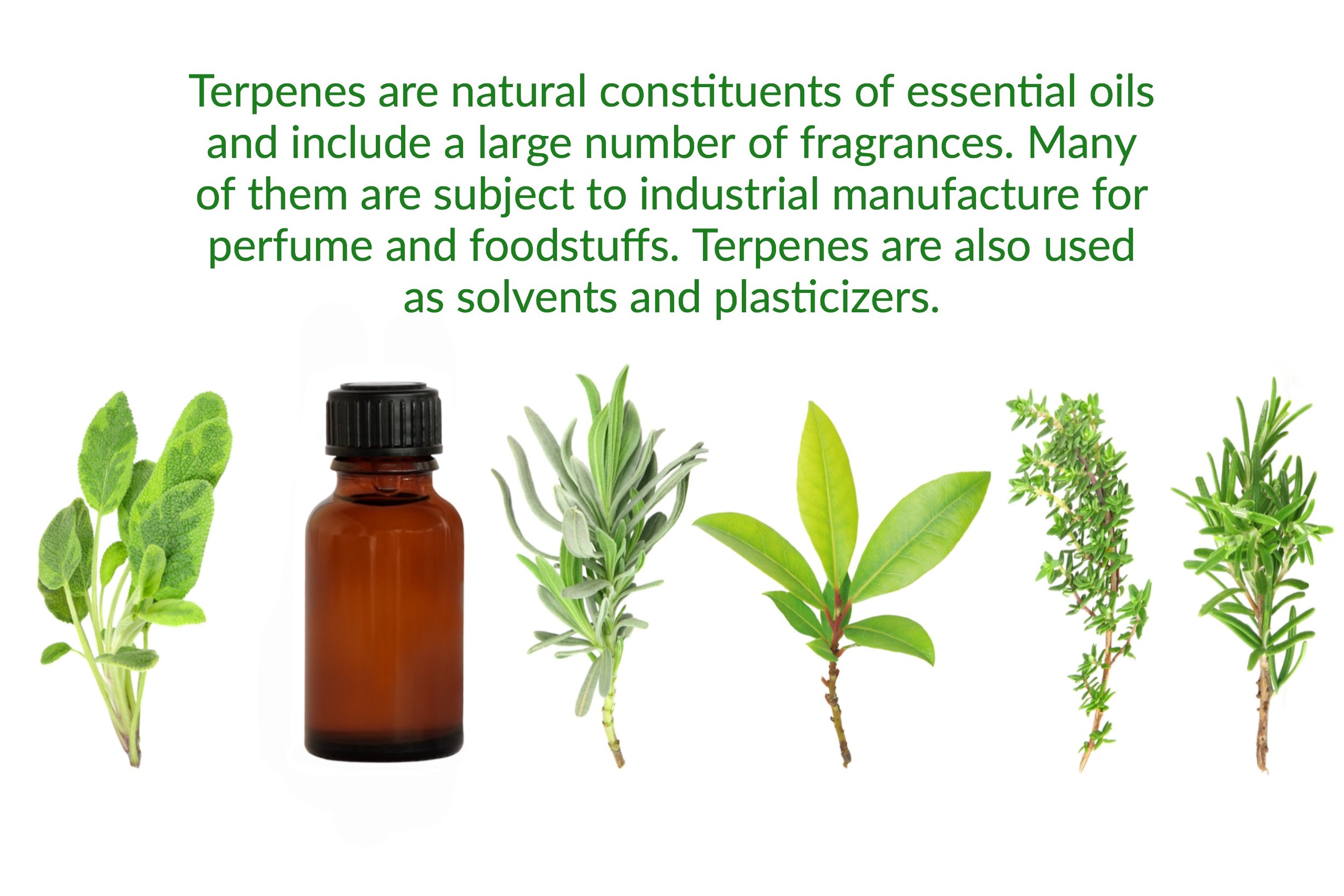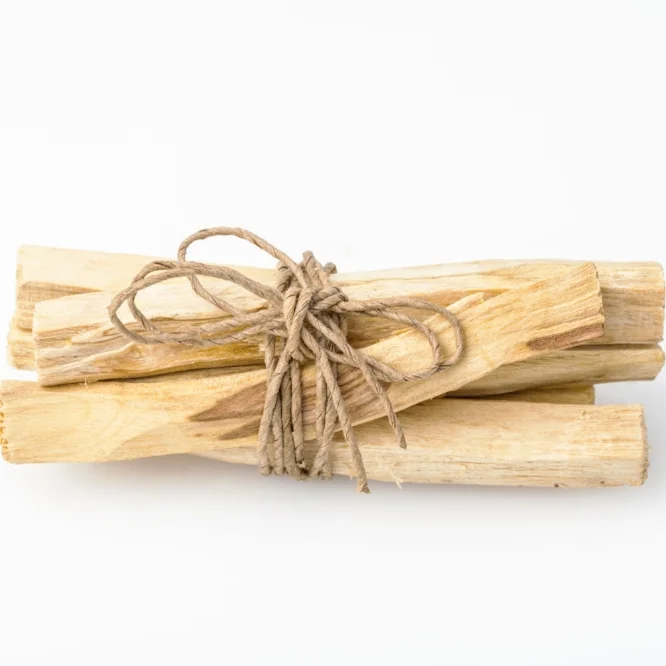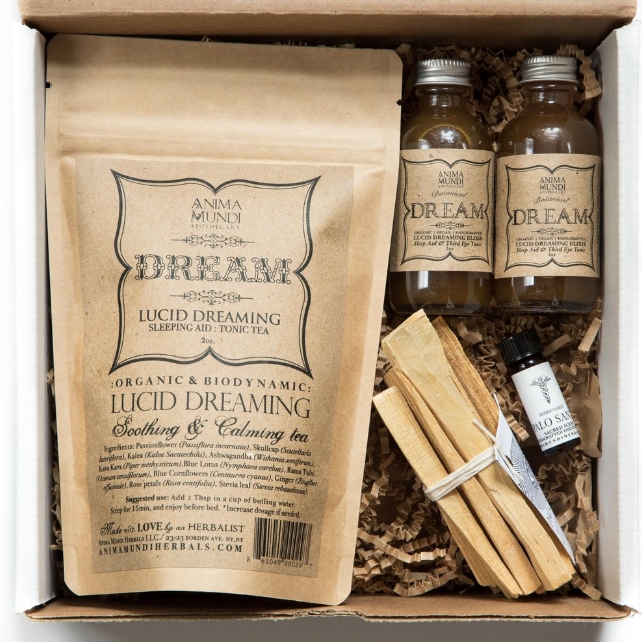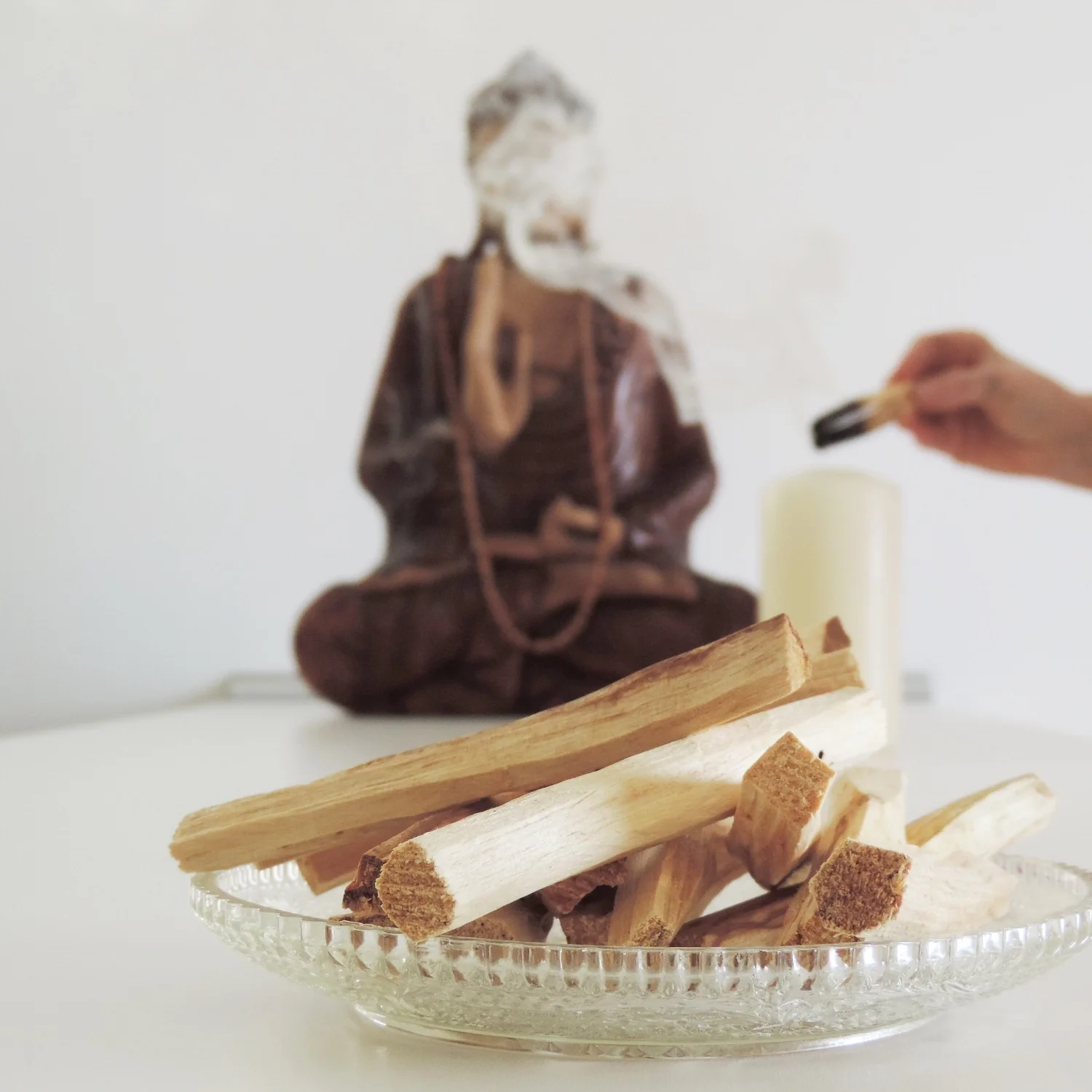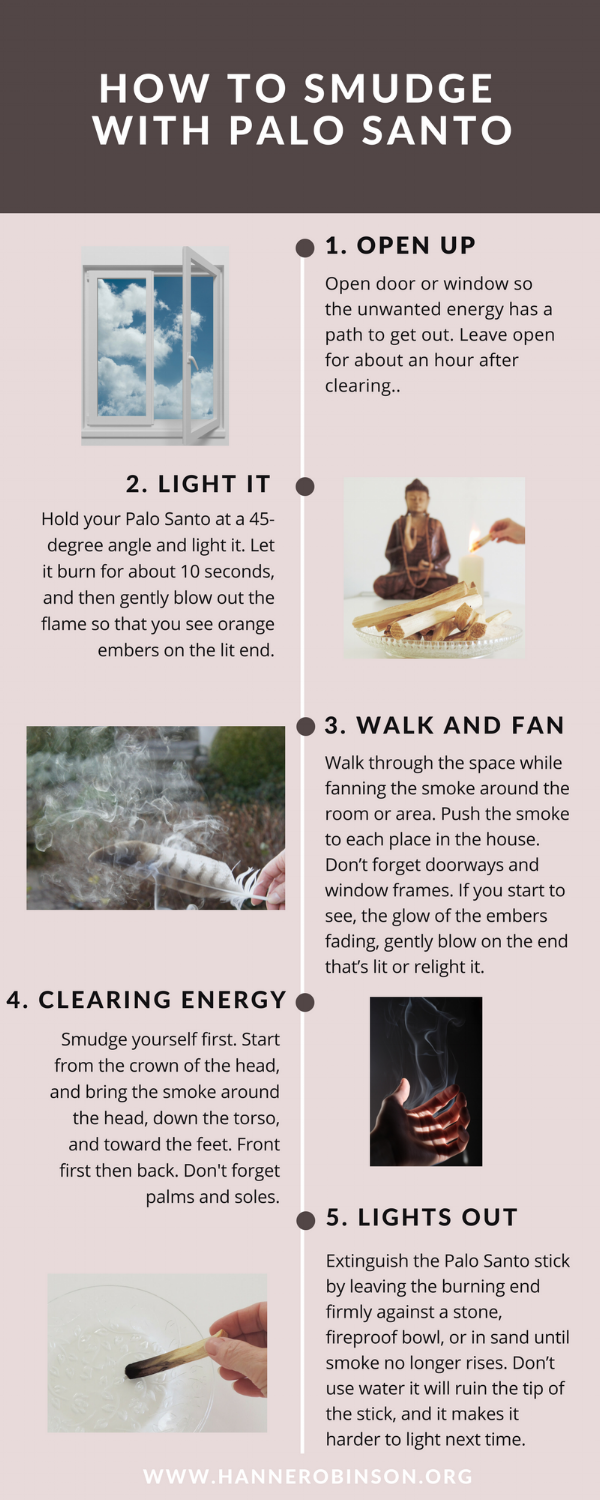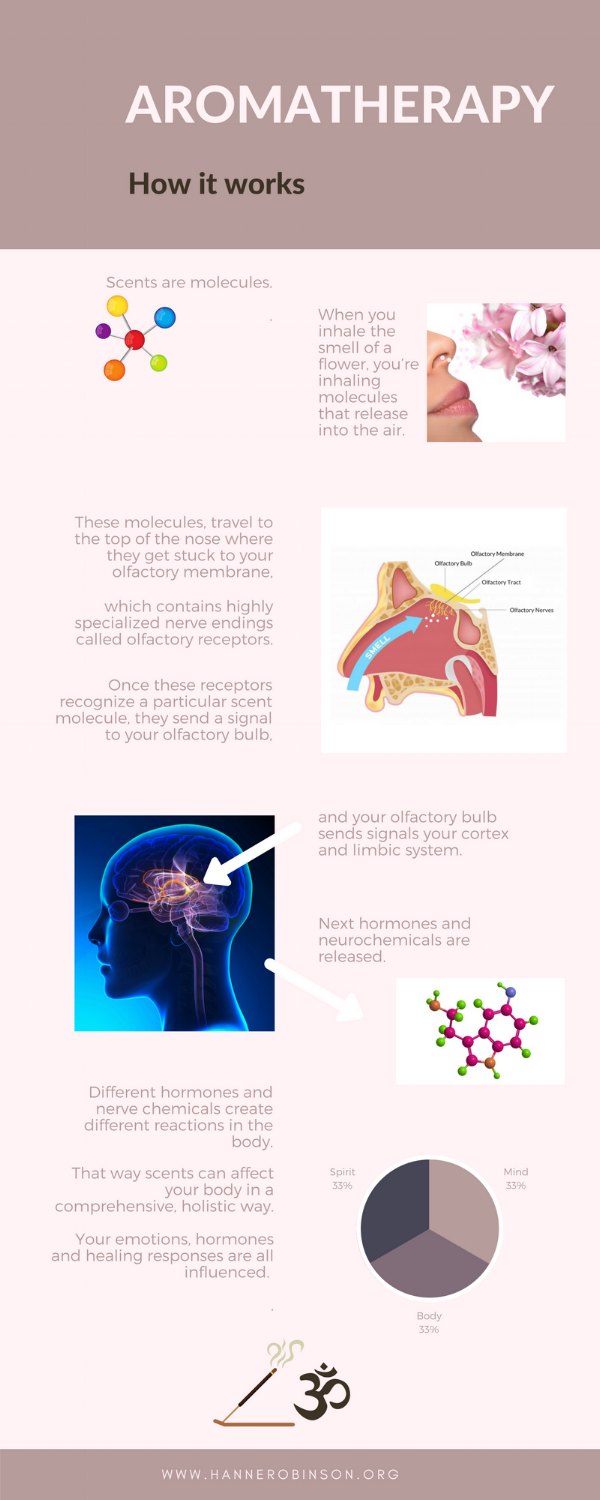How To Clean Your Home, Body And Spirit With Palo Santo
Playing With Fire
“Have you been smoking pot?” Husband raised his nose in the air and looked at me with eyes as big as plates.
“Fuck no! It’s Palo Santo darling.” I said. “I’ve been smudging.”
The expression on his face returned to normality. No longer surprised his nostrils and eyes returned to their standard size.
"How is that supposed to be healthy?" He fanned some smoke away. "Be careful that this science project of yours doesn't set our fire alarms off, dear."
Well, this project has moved slightly beyond the scientific boundaries. I have entered the religious department a little. I have been following in the footprints of South American Shamans (and the New York Yogis), which led me to the palo santo tree and its wild oil, resin and incense that apparently can do amazing stuff for home, body, skin and spirit.
But it's not all faith, because when you examine the content of this plant, you understand why it's so appreciated on so many levels and why it has become increasingly popular.
Read on and learn all about how smoke can clean a room, how scents affect brain and body, and how to smudge.
And get recipes on palo santo tea and body lotions.
This post contains affiliate links to the products that I use myself or can recommend. If you buy products through these links, the price will be the same for you, and I will receive a small commission, which helps to support this blog.
What Is Palo Santo?
Palo Santo (Bursera graveolens) is known as a healing and a spiritual wood.
It grows in northern Argentina, Paraguay, Peru, Bolivia, Brazil, and the coastal dry forests of Ecuador. The indigenous Shamans of the Andes and the Amazon has used it for centuries. (In Spanish, the name literally means “holy stick”). And in those areas, it’s considered the most important fragrant tree for incense and ceremony.
This heavily essential oil-saturated tree belongs to the same botanical family as frankincense and myrrh trees – The Burseraceae.
Its oil and aromatic resins are known for stimulating the immune system and fighting inflammation, and its smoke is believed to perceive spiritual awareness and evoke mindfulness and being in the moment, and it makes an excellent natural mosquito repellent.
Traditionally, only the fallen branches and twigs of the tree are harvested. It's believed that a tree or fallen branches must lie dead for 4-10 years before the medicinal and mystical properties of the wood begin to come alive.
“The tree dies only to give life to others”
When you use Palo Santo as a smudge, hints of anise, mint, citrus, and light pine will fill the air - and peacefulness might wash over you along with it.
The distilled Palo Santo oil is golden yellow, with a fresh and intense citrus aroma. Under the lemon top notes are subtle resinous wood notes and a slight medicinal pungency, which gives the oil an intriguing complexity.
Fun fact: The male and female palo santo trees grow in families, one male among eight females.
(Dante Bolcato).
What’s The Thing With Palo Santo?
The indigenous people of the Andes have been using palo santo for spiritual purification and energy cleansing for thousands of years, and it’s believed to have a lot of mystic properties too.
The rising smoke of the burning sticks will clear negative energy and restore tranquillity and calm. It's used to clean rooms and homes of bad energy, and to bring good luck (which may sometimes refer to clinical disease). But not just a rooms energy, also a person's energy field, defined as the area around a person that absorbs and deflects outer emotions and energetic influences, and it can heal physical ailments.
Palo Santo is also said to have a spiritually uplifting effect; thus it's a common part of shamanic rituals. But it’s also a valuable tool for meditation, enhancing creativity, and for tasks requiring sustained concentration.
Aside from its mental health and spiritual applications, Palo Santo offers promising benefits when it comes to raising immunity and fighting illness.
Health Benefits Of Palo Santo
The Palo Santo tree is found to contain around 112 chemical compounds, which make it a potent antibacterial, antiseptic, anti fungi, anti-inflammatory, sedative, and insecticide, that can help relieve sicknesses, colds, allergies, headaches, rheumatic pain, skin infections, as well as depression, anxiety, and stress.
Among other things, the oil in Palo Santo is found to consist of the molecules mono-terpenes (78.2%) and sesqui-terpenes (9.6%).
The two major constituents of the monoterpenes that are the key ingredients that give palo santo its healing properties are limonene (58.6% - very high amount), and alpha-terpineol (10.9%). (source)
The Limonene
Limonene provides plants with their pleasant citrus scent. It’s an orange oil that is otherwise very present in citrus oils like Oranges, Lemons, Mandarins, Limes, and Grapefruits, but is also found in Black Pepper, Spearmint, AND in Cannabis oil - actually limonene is the stuff many look for in cannabis oil for health purposes (with concentrations as high as 16% - quite less than in Palo Santo…).
Limonene Has A Plethora Of Health Benefits Here Are Just 8 Of Them:
Boosts immunity – as it’s a potent antioxidant and anti-inflammatory agent.
Improves gallbladder health. It has been used clinically to dissolve cholesterol-containing gallstones and clean out “fat sludge” in the gallbladder.
Provides indigestion relief. Because of its gastric acid neutralizing effect and its support of a healthy digestive movement, it has also been used for heartburn and reflux relief.
Might prevent and fight cancer. Limonene may block cancer-forming chemicals and kill cancer cells in the laboratory. But more research is needed.
Prevents fatty liver and insulin resistance. It helps prevent a build-up of fat that results in a fatty liver while also preventing insulin resistance (pre-diabetes and diabetes).
Antibacterial properties. Limonene is naturally used by plants to kill pathogens.
Aids in weight loss. It acts as a mild appetite suppressant and helps prevent weight gain.
Elevates mood and decreases anxiety and insomnia. It has an anti-anxiety effect, both calming nerves and improving sleep patterns.
The Alpha-Terpineol
Alpha-terpineol in Palo Santo is mostly known as a major component of pine oils. It can kill pathogens and has antibacterial, antifungal, anti-inflammatory and antiviral properties. It can purify the air by helping to eliminate various toxins that can live in your home. Read more about that function in the section about purifying smoke below.
For the mood, it’s warming and uplifting.
The Sesquiterpenes
Have anticancer activities.
Are antiseptic.
Are anti-inflammatory.
Are soothing to inflamed tissue.
Can produce profound effects on emotions and hormonal balance.
Support the liver.
Are gland stimulants
Increase oxygen around the pineal and pituitary gland.
Palo Santo And The Brain
Yoga studios have long started introducing Palo Santo to broader audiences and contributing to the current demand for Palo Santo sticks, and that’s not just to cover the whiff of the hard-working people in the shala.
It might more have to do with the fact that Palo Santo contains those sesquiterpenes I mentioned above, that means it’s in the same family as frankincense and myrrh - scents known to be the go-to oil for diving deeper into spiritual practices. Often used in meditation blends and renowned for supporting reflection, introspection and having deep roots in mystical rituals.
But it’s not all smoke talking here…
Tests with frankincense on rats activated the protein TRPV3, which is a common protein in all mammal brains, that not only is known to help play a role in our skins perception of warmth but also can have a strong anti-depressant and anxiolytic effect on your brain. This can leave you feeling open and relaxed, and help your mind to rest and simply perceive the world around it.
So it makes good sense that many religions and spiritual practices involve smoke from The Burseraceae trees like Palo Santo, Frankincense, and Myrrh as it can help induce a sense of calm observation and reflect on life while being able to plan for the future much simpler and less stressful.
Going to a ceremony with palo santo is said to help people feel calmer and happier.
Palo Santo And The Skin
Palo Santo has excellent absorption properties, and it's a sweet and soft oil. Use it mixed with a carrier oil for massage or as part of your skincare routine.
5 Palo Santo Skin Benefits
The high content of limonene in the oil increases the production of new cells and blood vessels, and improve skin healing with strengthening and rejuvenating properties.
The same limonene provides strong anti-inflammatory properties that help to protect and heal the skin.
The oil helps increase swelling in tissue, relieving muscle, bone, and joint pain.
With its antioxidant and antibacterial properties, it can be especially useful for dry to ageing skin, it boosts collagen and can help decrease wrinkles.
Fights off bacteria on the skin that can lead to acne, helping to protect and heal the skin.
6 Ways To Use Palo Santo
1. Smudging
The smudging thing is what Palo Santo is most famous for. When you smudge, you use the smoke from sacred herbs, like sage or Palo Santo sticks, to cleanse, purify or bless locations and people.
Many people smudge when they move into a new place or stay in a hotel room, to purify the new space. You may wish to perform a smudging ceremony after you hear bad news, or when you are preparing for a significant change in your life. Smudging could also help you deal with the after effects of a big argument or a long illness.
The words of the intention can be spoken into the smoke and sent to the “Light” with a gentle upward sweeping motion with the use of a feather.
Oh… and the smoke can also keep mosquitos at bay.
See below for a guide to the full smudging ritual.
2. Aromatherapy
Oil burners and aromatic diffusers with Palo Santo not only create a delightful scent in a room the essential oil can work for you too:
It can be used for calming panic attacks and anxiety.
It can cheer you up, and is helpful with depression, especially when combined with other anti-depressive oils such as blood orange, frankincense or neroli.
It can promote a sense of peace (a drop of frankincense may also be added).
Diffuse palo santo to ground, relax and calm the body, mind and spirit.
Diffuse with a few drops of lemon and one drop of peppermint to improve concentration.
It is a good repellent for mosquitoes and other insects.
Use in home or office to cleanse and protect you.
4. Steam Inhalation
Steam is especially effective within the respiratory system including the sinuses, throat, and chest and also to help relieve symptoms of infections and allergies. It supports immune function during cold and flu season.
Its effects are clarifying and pleasant.
Add a few drops of Palo Santo oil to a bowl of hot water, cover the head and bowl with a towel and breathe for a for a minute and then repeat.
5. Tea
Use Palo Santo tea as a component of herbal medicinal teas, for respiratory, urinary, bowel ailments and to improve mood.
Palo Santo Tea Recipe
This is as an energizing tea. You don’t need much as the flavor is quite compelling. Follow the instructions below to learn how to make Palo Santo wood tea and prepare to receive a mental, physical, and emotional boost with this simple recipe.
Ingredients:
Palo Santo Heartwood (1 stick)
Purified Water (1-2 cups for every teaspoon of shavings)
Honey, Stevia, or any preferred sweetener
Instructions:
Take a stick of palo santo and shave off thin, little bits of wood.
Place one teaspoon of shavings into 1-2 cups of hot water.
Depending on how strong you like it, leave the tea steeping for 10 minutes or more. For a stronger flavor add more shavings.
Pour through a strainer (or brew it in a tea infuser for simplicity’s sake).
Add a little of your favorite sweetener if needed. Honey is a great addition.
Light a candle, grab a book, find someplace cozy, and experience peace!
6. External Uses
With its soft and sweet scent Palo Santo is an ideal additive to massage oils and homemade lotions.
Palo Santo oil may be applied to the body (such as at the base of the skull or on the spine) to increase relaxation, similar to aromatherapy.
Apply a few drops of Palo Santo to your temples, the nape of your neck, your heart, or the soles of your feet while meditating to ward off negative emotions.
Add 4-5 drops to a bowl of water dip a piece of cotton cloth and apply as a cold compress to soothe and relax any specific area of the body.
Blend Palo Santo oil with any massage oil to relax tension and strain in the body.
Add Palo Santo to your massage oil for deeper relaxation, to mitigate muscular discomfort and help improve swollen joints.
Try a combination of Palo Santo with German Chamomile for all sorts of inflammations and arthritis pain.
Use it as an antiseptic to remove impurities from your skin and body.
Try it on skin infections like acne combined with other skin healing essential oils like Immortelle and Manuka.
Applied to your skin, it can help restore damaged skin and recuperate soft tendons injuries.
It blends well with Frankincense, Myrrh, Patchouli, White Sage, Lavender, Neroli, Rose, Ylang Ylang, Sandalwood.
Recipe: Homemade Body Butter With Palo Santo, Frankincense & Myrrh
This natural lotion hydrates the skin and provides essential vitamins and nutrients. In addition, the essential oils tone, lift, heal and protect the skin while also giving off a calming fragrance.
Ingredients:
1/4 cup Shea Butter
1/4 cup Cocoa Butter or Mango Butter
1/4 cup Coconut Oil
20 drops Frankincense essential oil
10 drops Myrrh essential oil
10 drops Palo Santo essential oil
Directions:
In a double boiler or glass bowl, combine all butters and the coconut oil.
Bring to medium heat and stir constantly until the butters are melted.
Remove from heat, add light oil and let cool slightly.
Add essential oils.
Move to fridge and let cool another 1-2 hours or until starting to harden but still somewhat soft.
Use a hand mixer to whip for 5-10 minutes until fluffy.
Put the mixture into a piping bag or in a freezing bag in which you cut a small hole in the bottom corner.
Squeeze the mixture into a container with a screw cap.
Store in temperature below 23 °C / 75 °F (otherwise it melts).
Enjoy!
Caution:
Note though that palo santo, should not be applied to the skin undiluted. It's ok to use one drop here and there as described above, but apart from that, you should always mix it with a carrier oil like coconut, olive, almond, peach kernel, avocado, and kukui, using no more than 1-2% palo santo.
Also, some people react to citrus, Frankincense, and Palo Santo oils by experiencing skin irritation, so perform a patch test first to be safe and use caution when it comes to applying the oil to babies, children and pets.
Do not use Palo Santo with small children, elders, people with epilepsy, pregnant and nursing women.
Where To Buy Palo Santo
Palo Santo trees have been seriously over-exploited in South America, especially in Ecuador - in many parts of the country where the trees once grew abundantly, the populations are now decimated. Therefore, strict laws now apply in most places about how much to sell, but the increasing demand has also created a breeding ground of illegal trade.
Consequently, if you are purchasing wild harvested Palo Santo, it's essential to do so from an ethical wildcrafter. So do a little research before you hit the "Place Order" button.
When you look for the essential oil: Be suspicious of companies selling Palo Santo oil (sometimes just called “holy wood oil”) for low prices over the internet. Check the genus species name (Bursera graveolens), so you know you're getting the real thing. Organic,100 percent pure oils offer the most benefits and are the only kinds recommended.
I buy from these suppliers:
Let's get mystical...
All About Smudging Now…
What Is Smudging?
Smudging is the common name of a traditional, spiritual ceremony, where you use the smoke from sacred plants like Palo Santo and Sage to drive away negative energy and to restore balance to an individual, a group, space, or all three. The ceremony is very simple and very empowering, and you don't need a lot of expensive equipment to start doing it in your own home.
The words of the intention can be spoken into the smoke and sent to the "Light" with a gentle upward sweeping motion with the use of a feather or your hand.
How To Smudge – The Ritual
1. Open door or window as the unwanted energy you are trying to clear must have a path to get out. Leave the door or window open for about an hour after clearing your space.
Examples of unwanted energy: getting toxic energy out of your house after a weekend rager, or an intense meeting at work.
2. The tools: Remember, you are playing with fire, so the right container for your smudging tool is key. Traditionally, people use an abalone shell to hold the sage, this is not mandatory when you smudge with Palo Santo sticks. You can use a feather to fan and spread the smoke around the space when burning it. Feathers help to remove dense energy from the body and energetic field.
Nevertheless. I’ve used nothing but my hands as tools so far and that worked fine.
3. Dress code: Consider your black wardrobe as you’re fanning lit herbs very close to your body.
Ritualistically, shamans wear black when performing rites/rituals/ceremonies/house clearings/exorcisms/healings to help the shaman remain invisible to the spirit/entity, and prevent anything from “sticking” to the spiritual practitioner.
From a psychological point of view, wearing black provides the feeling of being calm, in control, protected, and grounded—exactly how you want to feel when you’re throwing the bad juju out.
4. Light up: I use a candlelight, because a lighter gets too warm and a match is too short for the purpose. Grab your palo santo as far from the burning end as possible. Hold it at a 45-degree angle, light it, let it burn for about 10 seconds, and then gently blow out the flame so that you see orange embers on the lit end.
5. Walk and Fan: Walk slowly through the space while holding and fanning the smoke around the room.
Push the smoke to each place in the house. As you pass by an open door or window, you may push the smoke outside, carrying with it the negative energies.
Don’t forget doorways and window frames – some stuck energy might need to be smoked out from there too.
If you start to see the glow of the embers fading, gently blow on the end that’s lit or relight it.
6. Clearing energy off yourself or someone else: Be conscious of skin, eyes, hair, and clothing—sometimes ash will fly a bit. So, pull your hair back into a bun or ponytail, if relevant. It's customary to smudge yourself before moving on to someone else. When “fanning” someone else, remind them to shut their eyes.
Start from the top, and bring the smoke around the head, down the torso, and toward the feet (front first then back ). Don’t forget to get the crown of the head, and the palms and soles. You can use the feather as a fan to help keep the smoke going and to direct it.
7. Say a Mantra: Once the area is ventilated and the herbs lit, you can tell the unwanted energy to leave the space—out loud. Like: “Any energy that is not of my highest and greatest good get the fuck out. Please exit through the open window/door”.
8. Lights Out: The best way to extinguish the palo santo stick is by leaving the burning surface firmly against a stone, fireproof bowl, or in dirt or sand until smoke no longer rises. Don’t use water to extinguish the hot embers—it will ruin the tip of the stick and it makes it harder to light next time.
Keep your stick in a bowl or plate until you are ready to use it again: Make triple-sure that every bit of fire and smoke has been extinguished and rest the stock in the shell or non-flammable container.
How Can Smoke Be Purifying?
You wouldn’t usually put the word cleansing and smoke in the same sentence. But when smoke comes from certain plants like Sage or Palo Santo, it’s defined as medicinal smoke, because it can kill bacteria and charge the air with negative ions.
Negative And Positive Ions
Have you ever noticed how you feel when you stand near a waterfall or walk in a forest? You breathe in that fresh, clean air and you feel energized yet calm, alive, vibrant, refreshed. That’s negative ions at work.
When indigenous people, shamans or people, in general, talk about negative and positive energy it might refer to negative and positive ions.
A molecule with more positive electrons than negative carries a positive charge. When there is an extra negative electron, it has a negative charge. We call these positive and negative ions.
Positively charged ions concentrate indoors. Electromagnetic fields, fluorescent lights, carpet, aircons, metal, plastics, and air pollution all increase the number of positive ions in an environment. Positively charged ions have a negative effect on our physical and mental health, and they are associated with an increase in allergies, infections, lethargy, depression, anxiety.
Negatively charged ions have a positive effect, and they are abundant in nature with the highest concentrations forming near moving water (waves / waterfall) and old growth forests - especially pine forests carries a vast amount of negative ions. They elevate our mood by increasing serotonin levels, and they help stabilize blood pressure, improve the body’s alkalinity, strengthen bones, heighten immunity, accelerate physical recovery, they purify and clean the air and more.
In nature, negative ions are formed in a variety of ways. Airflow friction, falling water, and plants all produce about half of them. For example, they stream off the leaves of plants, most notable pines, and asparagus ferns.
If you don’t have access to a pine forest or live near falling water, smudging can do the job too. Burning Palo Santo, sage or other herbs neutralizes the positive charge and releases large amounts of negative ions into the atmosphere.
- and maybe all that alpha-terpineol that Palo Santo contains - just like pine trees do have something to do with it too (but that's just my reasoning).
The Cleansing Smoke
Not only can medicinal smoke charge the air with negative ions, recent studies have also shown that medicinal smoke can be a powerful antiseptic that can purify the air within confined space of 94% of harmful pathogenic bacteria for up to 24 hours.
Appendix - How Does Smoke, Smell And Essential Oil Affect The Body?
The limbic system in the brain supports a variety of functions including emotion, behavior, motivation, long-term memory, and operates by influencing hormones and the autonomic nervous system. The autonomic nervous system regulates functions like heart rate, digestion, breathing, pupillary response, urination, and sexual arousal, and is the primary mechanism in control of the fight-or-flight response.
Essential Oils Absorbed Through The Skin
The molecules in essential oils are small enough to allow them to penetrate through the skin.
The molecules travel through the top layer of skin (the epidermis) reaching a deeper layer of skin (the dermis) to the blood vessels allowing them to circulate through to all body areas.
Disclaimer:
All information in this blog is strictly for informational purposes only and should not be taken as medical advice. The statements made in this blog have not been evaluated by The Danish Health Authority. The products linked to in this blog and any information published in this blog are not intended to diagnose, treat, cure, or prevent any disease. The information provided on this blog is not a substitute for a face-to-face consultation with your physician, and should not be construed as medical advice. The entire contents of this blog are based on the opinions of Hanne Robinson. By reading and using this blog, you agree to only use this publication for personal informational use and not as a substitute for medical or other professional advice.




